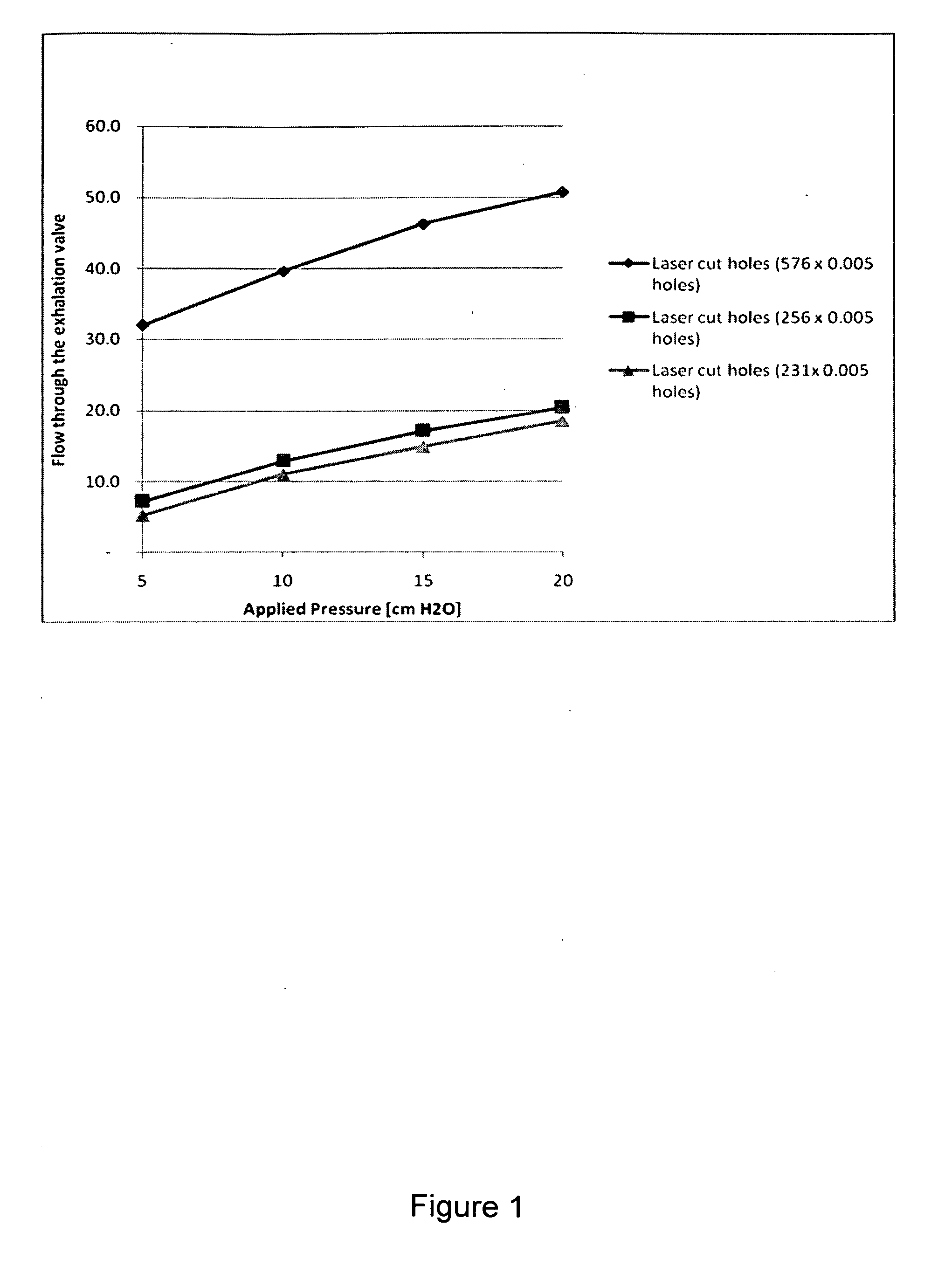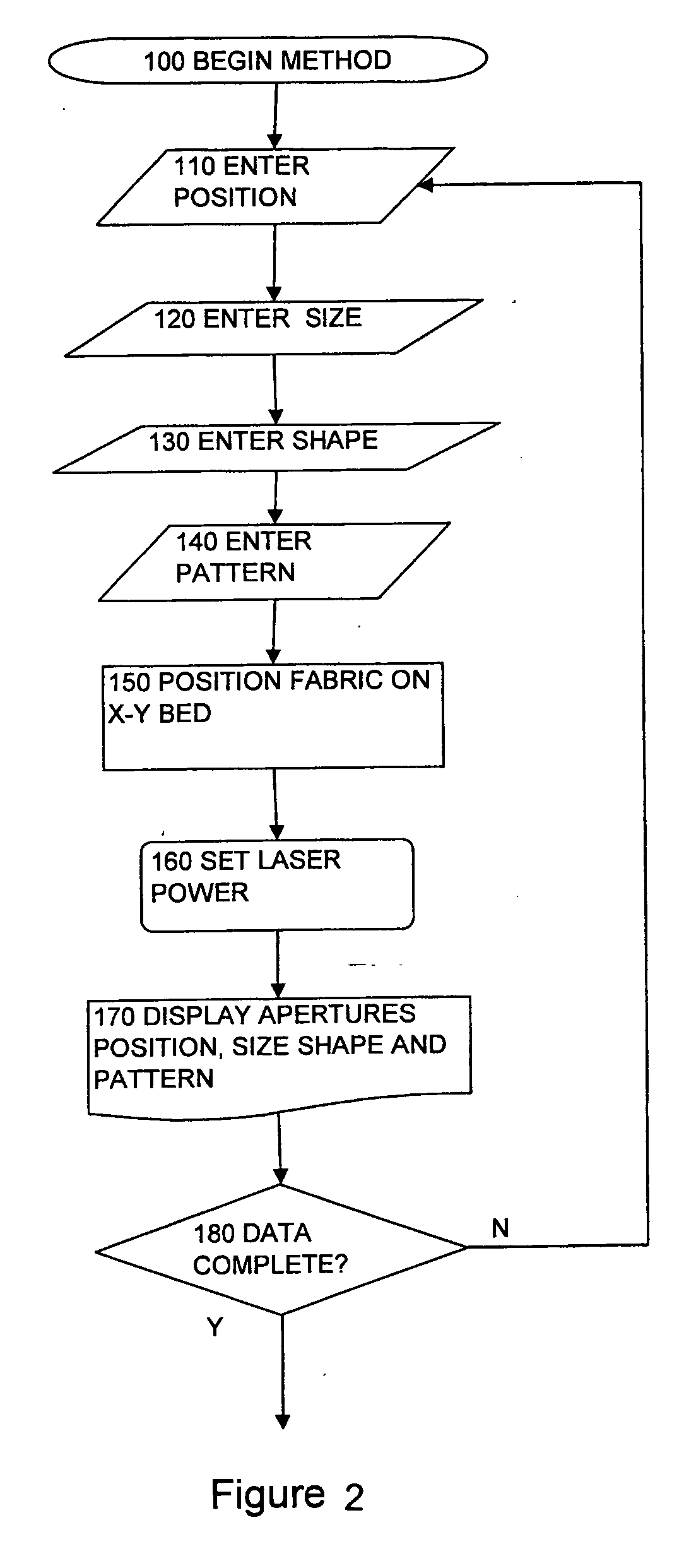Method to cut apertures in a material
a material and aperture technology, applied in the field of material aperture forming, can solve the problems of cumbersome masks, uncomfortable masks for users, and the comfort aspect of mask treatment remains a difficult aspect of mask treatment, and achieve the effects of quiet operation, economical mask production, and quiet operation
- Summary
- Abstract
- Description
- Claims
- Application Information
AI Technical Summary
Benefits of technology
Problems solved by technology
Method used
Image
Examples
Embodiment Construction
, particularly, when such description is taken in conjunction with the attached drawing figures and with the appended claims.
BRIEF DESCRIPTION OF THE DRAWINGS
[0022]FIG. 1 is a diagram of flow through the exhalation valve vs. the applied pressure.
[0023]FIG. 2 is a flow chart of the presently preferred embodiment of the method.
[0024]FIG. 2A is a flow chart that is a continuation of FIG. 2.
BRIEF DESCRIPTION OF A PRESENTLY PREFERRED AND VARIOUS ALTERNATIVE EMBODIMENTS OF THE INVENTION
[0025]Prior to proceeding to the more detailed description of the present invention it should be noted that, for the sake of clarity and understanding, identical components which have identical functions have been identified with identical reference numerals throughout the several views illustrated in the drawing figures.
[0026]Reference is now made, more particularly, to FIG. 2. Using a computer with cutting control software, a laser and x-y bed, the user enters aperture.
[0027]The user enters position info...
PUM
| Property | Measurement | Unit |
|---|---|---|
| size | aaaaa | aaaaa |
| total geometric area | aaaaa | aaaaa |
| geometric area | aaaaa | aaaaa |
Abstract
Description
Claims
Application Information
 Login to View More
Login to View More - R&D
- Intellectual Property
- Life Sciences
- Materials
- Tech Scout
- Unparalleled Data Quality
- Higher Quality Content
- 60% Fewer Hallucinations
Browse by: Latest US Patents, China's latest patents, Technical Efficacy Thesaurus, Application Domain, Technology Topic, Popular Technical Reports.
© 2025 PatSnap. All rights reserved.Legal|Privacy policy|Modern Slavery Act Transparency Statement|Sitemap|About US| Contact US: help@patsnap.com



